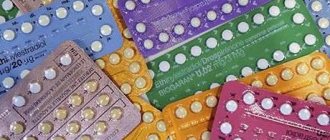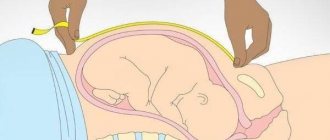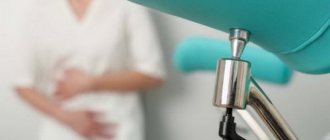A woman is able to become pregnant thanks to the presence of follicles that mature normally and are available in the required quantity. They perform a protective function - they protect eggs during their development. Normally, during one menstrual cycle, one is released - dominant, but sometimes two mature.
Follicles in the ovaries
Inside the ovaries, oocytes mature and are ready for fertilization by sperm. Conception is possible only if they are fully developed and mature. Often, hormonal disorders lead to abnormalities that provoke the formation of cysts or infertility.
The main task of the follicle is to protect oocytes from destruction and the negative influence of endogenous factors. The eggs located in the female reproductive glands are still immature. That is why the success of conception and the course of pregnancy largely depend on the degree of protection of oocytes from the influence of destructive factors.
How often does it happen?
Every woman has 2 ovulations at least once in her life.
When a healthy body has all the conditions for procreation and the uterus functions normally, re-ripening can occur. And if there is another wave of activity, twins or even triplets may be born. Most often, repeated ovulation occurs after stimulation, when a woman has previously failed to become pregnant. Then, under the influence of follicle-stimulating hormones, hyperovulation occurs, increasing the chances of conception. But it is possible that this can happen in a normal cycle.
Stages of follicle development
Folliculogenesis is the continuous maturation of follicles, which begins in the antenatal period and ends in the menopausal period. Due to apoptosis, most immature female germ cells die. Only a small part of them goes through the entire maturation cycle and takes part in ovulation.
The types of structural elements of the ovaries are determined by the stage of their development:
- primordial (germinal);
- preantral (primary);
- antral (secondary);
- preovulatory (Graafian vesicles).
24 hours before ovulation, the production of estrogen increases, stimulating the release of luteinizing hormone into the blood. It is peptide hormones that initiate the formation of a protrusion in the follicular sac, from which the oocyte subsequently emerges (ovulation).
Signs of this phenomenon
You can track it by the presence of characteristic symptoms. If two eggs mature, this is indicated by:
- Painful sensations of an aching, pulling nature alternately in the right and left sides - the pain appears on the side of the ovary from which the egg is released.
- Breast swelling, nipple tenderness.
- The presence of a small amount of brown or bloody discharge for 2-3 days.
- The presence of abundant and liquid mucus in the vagina.
- Increased basal temperature.
- Exacerbation of taste buds and sense of smell.
- Passage of gases.
- Increased libido, feeling of lack of sex.
Important! Double ovulation can be confirmed using a special test or ultrasound, which will show two dominant elements, or the formation of a corpus luteum instead of one of them, if it has burst by that time.
Follicle cycle
Throughout the menstrual cycle, changes occur in a woman's reproductive system that precede ovulation. The size and location of the follicular sacs is determined by the phases of this cycle:
- menstrual (duration 3-6 days) – bleeding from the uterus caused by endometrial rejection;
- follicular (duration 14 days) - the process of development of new structural elements of the ovaries, which begins with the production of luteinizing and follicle-stimulating hormones, accelerating their growth;
- ovulatory (duration 3 days) – rupture of the dominant follicle followed by the release of an oocyte ready for fertilization;
- luteal (duration 16 days) – intensive production of progesterone and estrogen, preparing the female body for pregnancy.
Mature oocytes are visible to the naked eye on the screen of an ultrasound scanner. Normally, from 1 to 3 dominant follicles mature in one menstrual cycle.
Causes
The development of two follicles at once in one or more ovaries occurs under the influence of certain factors.
Among the reasons provoking this phenomenon are the following:
- State of stress, nervousness, acute feelings as a result of conflict situations.
- Irregular, episodic intimate life.
- Predisposition at the genetic level.
- Consumption of foods or medications with increased concentrations of estrogen.
It rarely occurs at the same time, but can result in multiple pregnancies.
In one ovary
Most often, maturation in the right ovary occurs after prolonged hormonal stimulation. In rare cases they ripen in the left. During the stimulation process, those follicles that normally stop developing actively grow under the influence of hormones. This highlights 2 main elements. The eggs in them mature simultaneously or after some time.
If one egg is fertilized, one child will be born. If both are fertilized, the woman will have twins.
Peculiarity! During intimate contact with different partners, during one menstrual cycle with two ovulations, in the event of conception, children may have different fathers.
In both
Follicles in the right and left ovaries may develop differently. Sometimes it happens that one matures in each. This is not considered a pathology.
This phenomenon is more typical for women who have not yet given birth. This is how nature tries to increase the chances of conception among those who have crossed the thirty-year mark.
Follicles grow poorly
Underdevelopment of the structural components of the ovaries is one of the main causes of female infertility. In the absence of a dominant follicle, luteinizing hormones do not enter the bloodstream, stimulating the onset of ovulation. The main causes of insufficient development of germ cells include:
- pathologies of the hypothalamus;
- violation of the generative function of the ovaries;
- contraceptive abuse;
- consequences of infection in the small genital organs;
- pathologies of the thyroid gland;
- endocrine disorders;
- depression and emotional instability;
- formation of tumors in the pituitary gland.
Adequate hormonal therapy allows you to restore the menstrual cycle and the process of oocyte maturation. If conservative treatment is ineffective, ovarian cauterization is prescribed, which consists of surgical removal of underdeveloped cells from the gonads.
What does the absence of DF indicate?
Sometimes, when the doctor does an ultrasound, it is determined that there is no dominant follicle. This may be due to the following reasons:
- Cell development occurs very slowly. In such cases, ovulation does not occur, but hormone tests show normal levels.
- The cell develops to the required size, but it does not rupture and, accordingly, ovulation also does not occur.
- Stopping the DF at one of the phases.
- If there is no DF, then this may indicate a dormant mode of the appendages.
- Also, an ultrasound may not show the presence of DF if there is early menopause. Throughout life, a certain number of follicles are produced in the appendages, and the absence of viable cells on ultrasound suggests that they simply may no longer exist in the ovaries.
Important! For a woman planning a pregnancy, any deviation from the norm requires consultation with a specialist and possible treatment.
Follicles during eco
The probability of conception is influenced by the number of antral follicles in the female reproductive glands. In the absence of pathologies, their number averages 16-26 pieces. In this case, the probability of successful maturation of the dominant follicle is almost 100%.
An increased content of oocytes in the ovaries often indicates the development of polycystic disease. Gynecological pathology is diagnosed in 65% of cases in patients suffering from infertility. With polycystic disease, there is no ovulation phase, so a woman cannot become pregnant.
If there are no more than 6 immature follicles in the ovaries, the probability of ovulation is reduced to 5%. In this case, conceiving naturally is almost impossible, so women are recommended to undergo in vitro fertilization (IVF).
Is treatment necessary?
In a healthy woman, the number of follicles depends on the phase of the menstrual cycle.
If there are a lot of them in the ovaries a few days after the end of menstruation, then this is not a pathology. Most often this is the result of overwork or hormonal imbalances. Further development will go in different ways until 1-2 dominant ones stand out among them. When their number does not exceed ten, this is considered the norm.
Treatment becomes necessary only in the only case where the eggs do not come out and the follicle develops into an ovarian cyst. Then medical care and specialist consultation are required.
Follicle puncture during IVF
Follicular puncture is a minimally invasive procedure, the purpose of which is to extract an egg from the gonads. Under in vitro conditions, the oocyte is fertilized and the embryo is transplanted into the patient's uterus.
The process of extracting female germ cells is carried out according to the following scheme:
- under general anesthesia, a thin needle is inserted into the ovary;
- after the needle penetrates the follicle, the oocyte is collected;
- The egg is cleared of epithelium and placed in a special incubator.
The prepared oocyte is fertilized by a sperm, after which the embryo is transplanted into the patient’s uterus.
Recommendations for conception
Use our conception calendar to determine your ovulation days.
It is advisable to take a two to three day break from sexual activity before this period. This will allow your spouse to “accumulate” a sufficient number of sperm. Although, as reality shows, this is not at all necessary for many married couples.
Before sexual intercourse “aimed” at conception, active toileting of the female genital organs using agents that can change the acidity of the vagina is undesirable. This is especially true for douching. Regular hygiene procedures are quite sufficient. Research results show: sperm are very sensitive to the chemical composition of the environment they enter - even ordinary saliva has a detrimental effect on them.
The most favorable positions for conception are “missionary” (man on top) and when the woman is in the knee-elbow position (man behind). Although scientists now claim that there are no wrong postures. It cannot be said that one sex position is successful for conception and another is not. It very rarely happens that a woman's cervix is in an unusual position during sex in a certain position. The only thing you can consider when having sex is the law of gravity. In some positions, the sperm flow slows down.
The likelihood of conception also increases if a woman remains in a lying position for 20-30 minutes after ejaculation. In this case, it is advisable to slightly raise the pelvic area (for example, by placing a pillow under the lower back). There's no point in putting your feet up. You can often hear this advice for speedy conception: after sex, you need to lie down with your legs up. In fact, even if you raise your legs up, the position of the pelvis will not change. This will not affect the success of conception in any way. But just lying quietly after sex will be really useful. This will make it easier for sperm to enter the uterus.
To make sperm more viable and active, a man should not wear tight-fitting clothes. Frequent visits to the sauna and the habit of carrying a mobile phone on your belt also have a bad effect on sperm quality.
Stimulation of follicles during IVF
With hormonal infertility, it is impossible to extract a mature egg from the ovary due to the absence of ovulation and the biochemical processes that precede it. You can increase your chances of successful conception using IVF by selecting several mature eggs at once.
To stimulate the growth of germ cells, hormonal drugs are used, thanks to which from 8 to 15 follicles are formed in the ovaries. During puncture, specialists select only the largest of them, the diameter of which is 15-20 microns.
Will there be two ovulations?
Science has proven that second ovulation can occur within one menstrual cycle. This phenomenon is characterized by the following features:
- If two mature eggs are released and both are fertilized, identical twins will be born.
- One or two ovaries can participate in the process.
- The first and second ovulation occur simultaneously, or with an interval of 2-3 days.
- If conception did not occur at the first time, then the probability remains at the second.
Interesting! In fact, its reoccurrence is not uncommon, but goes unnoticed if conception does not occur.
Are they ripe?
Pregnancy occurs when the sperm fuses with the egg and it attaches to the wall of the uterus. Perhaps this only occurs during ovulation.
This is a process that occurs monthly in the female body approximately in the middle of the menstrual cycle.
During it, several of the follicles dormant there mature in the ovaries. One of them, the dominant one, releases that same egg that can give new life.
The body reacts to the onset of pregnancy instantly. He completely rebuilds himself, throwing all his strength into preserving the embryo. This includes refusing to produce new eggs. During gestation, this process not only takes away much-needed energy, but can also cause harm.
Hormones contribute to the restructuring of the body. Follicles are also directly related to their production. In place of the one that released the egg, a special gland is formed - the corpus luteum. It produces the “pregnancy hormone” progesterone. But only with the “support” of another hormone, hCG. It is secreted by the membrane of the embryo.
If for some reason pregnancy does not occur, the corpus luteum is destroyed and excreted from the body naturally. If events develop favorably, it will continue to function at least until the end of the third trimester, until the placenta matures, which will subsequently take over its functions.
Why is the ovulation test positive?
Occasionally, in early pregnancy, ovulation tests may show a positive result. However, in the vast majority of cases this will not mean that this process actually takes place.
Usually there is a rational explanation for this: a spoiled test or some deviation in the woman’s health. Having discovered such a result, you should pay close attention to your well-being.
It can signal:
- hormonal imbalance;
- renal failure.
In such cases, the concentration of luteinizing hormone increases, to which the test for determining ovulation reacts.
Diagnostics
Polycystic ovary syndrome can be suspected based on chronic anovulation and frequent miscarriages and infertility. During the examination, the doctor notes external changes in the woman (male hair growth, excess weight). Bimanual examination of the pelvis helps to identify enlarged ovaries.
The following studies are mandatory if polycystic disease is suspected:
- Ultrasound (regular and transvaginal). It is used to determine the size and number of follicles. The study is carried out on different days of the menstrual cycle to ensure completeness of the data.
- Blood test for hormones. The level of estrogen, male sex hormones, luteinizing hormone, and progesterone is determined.
- Puncture. The manipulation is carried out to identify the nature of the liquid contained in the capsule.
Boy or girl
And finally, regarding a very popular problem - how to conceive a boy (or girl)? Actually, nature deals with this issue. Therefore, the “pure” probability of the gender of the unborn child for both boys and girls is 1:1.
From your school course on human anatomy, you probably remember that the sex of the unborn child depends on the sperm that fertilized the egg. The female egg carries 22 non-sex chromosomes and one X chromosome. A male sperm carries 22 non-sex chromosomes and either an X or Y chromosome. If the sperm carries an X chromosome, a girl will be born (the complete set of chromosomes in a female individual will be 46XX), if the Y chromosome will be a boy (the complete set will be 46XY).
Recently, a lot of information has appeared in popular literature about how Mother Nature can be “outsmarted.” Effective means include special diets, astrological calculations, magical manipulations and much more. Perhaps some of this can increase or decrease the probabilities, but within just a few percent.
What to do if there are no follicles
First, you need to make sure that the doctor who made the diagnosis is competent. It is advisable to contact another specialist and do a repeat ultrasound on a different device in the next cycle.
Before you panic, you should start treating the disease from specialists and at the same time take advantage of the opportunities to solve the problem:
- Normalize your lifestyle: quit smoking, give up alcohol, exercise in a reasonable amount, maintain a routine.
- Adjust your diet: give up salty, fatty, spicy foods. Reduce consumption of citrus fruits, pineapples, pears, cabbage, rice. Legumes, vegetables, pomegranates and apples have a positive effect on ovulation.
- Use traditional methods: sage, plantain, aloe stimulate ovulation.
- Inhale the vapors of essential oils: sage, basil, cypress, anise.
- Consult a specialist about vitamin therapy. Folic acid and vitamin E effectively combat insufficient ovarian activity.
- Treat viral infections, including STIs.
- Eliminate psycho-emotional stress, stress, and, if necessary, use medications that calm the nervous system (valerian, glycine, etc.)
It happens that the above methods are sufficient to normalize the functioning of the ovaries and improve well-being, but the main way to solve the problem is to see a doctor and undergo hormonal therapy under strict control.
Depending on the cause of the dysfunction, eliminating it will help normalize the functioning of the female organs. For example, if the disappearance of follicles occurred due to a sudden weight gain, then its normalization is sufficient for recovery.
Before using additional methods to solve the problem, consultation with a specialist is required.








